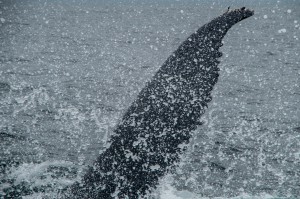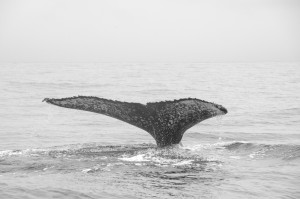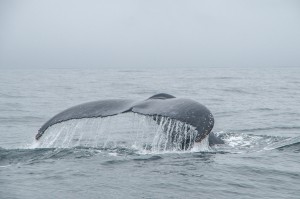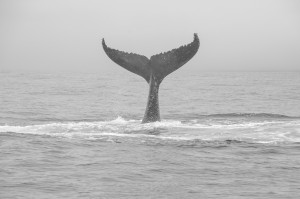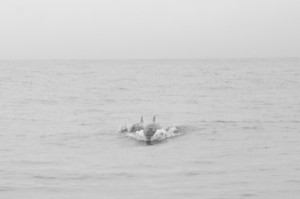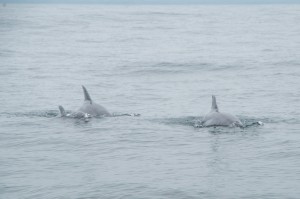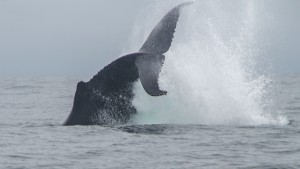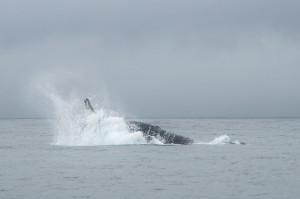continued from road trip around Gabon part 3
On Day 9 we left Leconi and headed west to Franceville (supposedly the 3rd largest city in Gabon) in route to Poubara and then Lekedi Park. After reading though the Bradt Guide we learned that there were 2 roads leading to Poubara Bridge, so we hoped that might be able to take the one road there and then cross the river (somewhere) and take the other road further west to Lekedi, instead of just taking the main road that would require us to back track. With that plan in mind we drove around Franceville looking for this secondary road and with the assistance of several locals we found it.
Remember when I said the Bradt book isn’t always correct or it seems the authors didn’t actually test out all the advice they put in there…here is the best example….
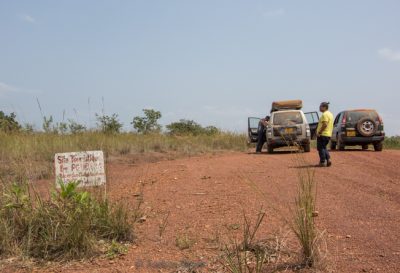
Yes that secondary road does take you to, or rather close to, the bridge, but not in a way you will ever find it or will be useful to you…
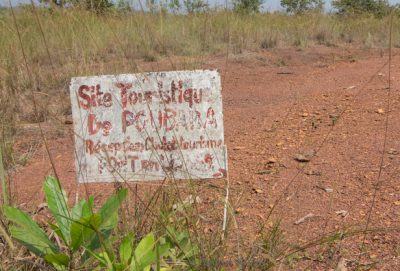

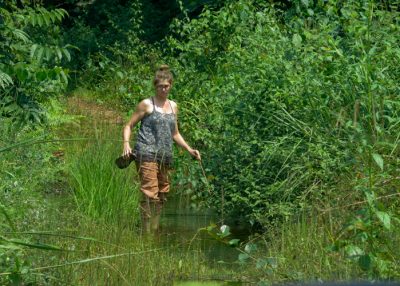
Please do not take the back way to the Poubara Bridge! You will end up on a terrible dirt road that become a serious 4 wheel drive experience (and we drove it in the dry season, I can only imagine what it looks like in the rainy season) and you will dead end at a gate (probably part of the Poubara Dam). On the drive there we noticed quite a few steep downhill “tracks” (even worse than the road we driving on) to our right. I’m sure one of these will take you to the trail near the backside of the bridge, but good luck deciding which one it would be and getting down it.
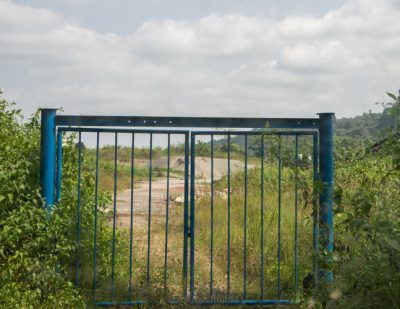
So after that, we turned around and back tracked to Franceville and took the main road to Poubara
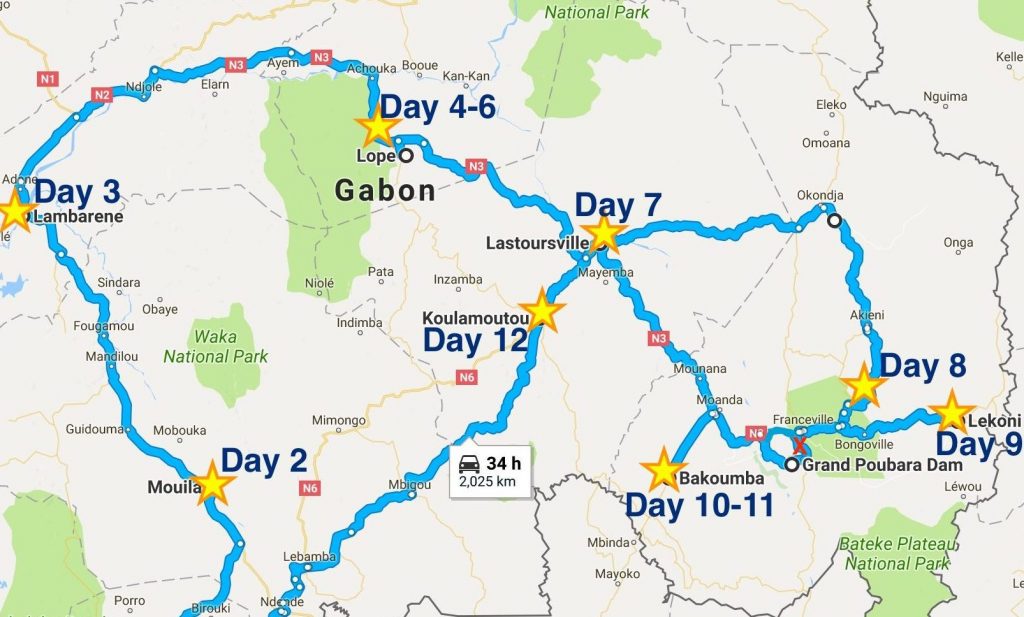
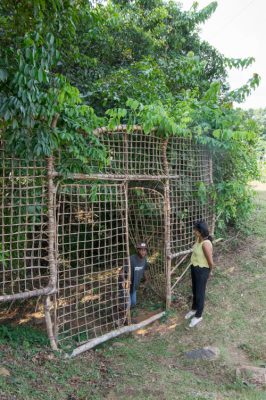
The Poubara Bridge is a suspended bridge made of liana vines and is quite impressive. There is a small fee to go over the bridge and then a guide will also take to some waterfalls and rapids nearby if you like. The bridge is made by hand by members of the local tribe, popularly known as pygmys. Only one person is allowed to cross at a time (the bridge is not super stable, as you might imagine) and sometimes there are quite large gaps between where the vines are woven together, making the whole experience a little nerve wracking as the wild river water is flowing beneath you towards a waterfall….
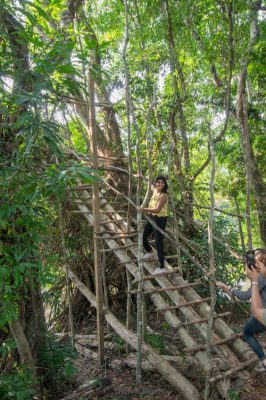

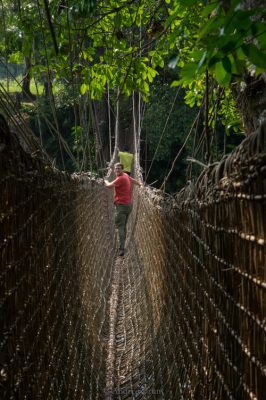
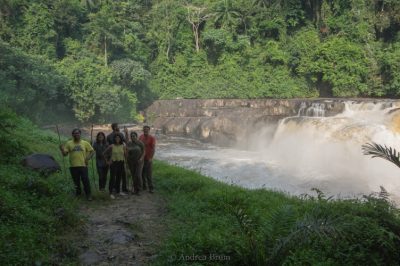
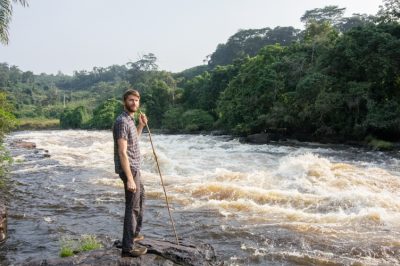

After leaving Poubara we headed further west to the town of Bakoumba from which we visit Lekedi Park.
We decided to stay at the hotel associated with the park, which is actually old hotel rooms from the expat camp of the old mining company that used to be there. There was a “conveyer” system that transported manganese to the port of pointe noir. Bakoumba was one of the stops along the route and the company had set up a town to coordinate operation of this system. When this site of the mining company closed down, an initiative was started to start up a private park there, to help provide jobs for some of the workers and keep the town afloat. This happened about 20 years ago and I’m pretty sure none of the buildings or accommodations have seen any maintenance since. It was pure luck as to which of us got a semi-decent bed or a working shower.

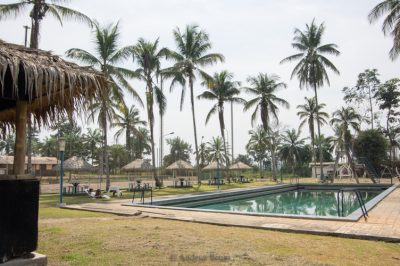
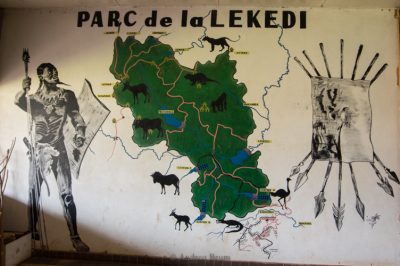
After a nice meal (it was very tasty, fairly basic like most meals in Gabon, but tasty!) we played a game of cards and headed to our (rather uncomfortable) beds.
The next morning was our first excursion into the park. The park is very large and they have a wide variety of animals, either on islands or separated by several sets of fences. There are two different groups of chimpanzees, a few gorillas, a large group of mandrills, some forest buffalo and antelopes, red river hogs, etc. Most of the animals were either rescued from bushmeat traders or were previously housed a the research university in Franceville before they banned primate experiments, and thus could not be released back into the wild. You pick what you want to see for the morning and afternoon excursions (each of which takes about 3-4 hours including travel time to get there). For the first morning we decided to see the chimpanzees, one of the main draws being that you can walk over one of the chimpanzee areas on a long suspension bridge.
The first group of chimpanzees (the larger ones) lived on an island and you take a boat to go see them. Chimpanzees are our closest relative, they’re extremely intelligent, and they exhibit very similar facial expressions to humans. If you’ve ever seen chimpanzees you’ll know this can sometimes be quite disconcerting. They are also notoriously aggressive and some groups have been known to use tools and will hunt an kill other animals. Getting on the island with the chimpanzees is forbidden 🙂
Approaching the island by boat this was our first glimpse of the chimps:
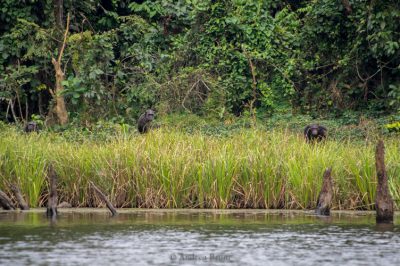

They were clearly keeping a good eye on us. Soon after we got close the dominant chimp went a little crazy and started screaming and chasing two of the other around and two of them got into a fight.

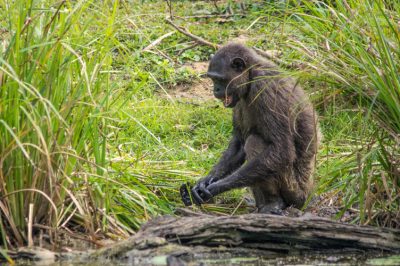
Then everything settled down and we enjoyed watching them.
One of the females even had a very little baby!
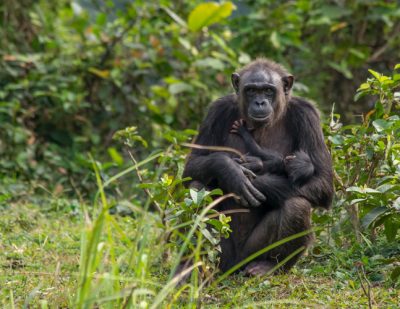
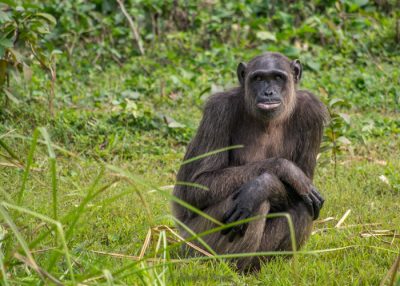
After visiting the crazy chimps on the island, we went to see the smaller, more docile chimpanzees.
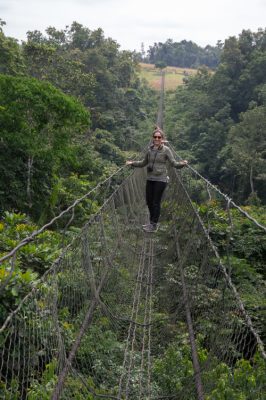
The are in a very large enclosure, above which a very long (300m) steel cable suspension bridge hangs. This allows you to have a birds eye view of the chimps and tree tops from a safe distance. Sounds great, right?! Remember when I said the Poubara vine bridge was kind of nerve wracking? Well that was nothing compared to this bridge of death…. Being so incredible long (and high off the ground) means that the bridge has a nice swing to it when you’re walking on it that get more exaggerated the further towards the center you are. Now imagine 7 full size adults all walking (at different paces) and all leaning to look for chimpanzees/take pictures/selfies while moving across this monstrosity. I consider myself a pretty adventurous person and don’t have a fear of heights, but when you’re in the middle of a 300 meter long steel cable bridge that may or may not have had any maintenance work done on it in the last 20 years (it’s Gabon, so probably not), maybe 20 meters above the ground where chimpanzees are roaming, and every time someone else move it feels like the bridge is likely to flip over, you get a bit rattled.
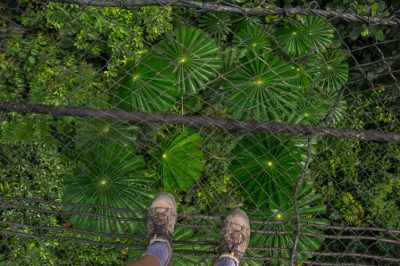
As I was walking across the entire middle portion of the bridge I was not thinking oh what a beautiful sight this is, I was gripping onto those steel cables and thinking how on earth am I going to hang onto this thing WHEN it finally flips all the way over. I didn’t take any photos as I was in the middle of the bridge (as I was too busy hanging on for dear life and yelling my friends behind me to stop walking), so you’ll have to take my word for it when I say at certain points that bridge was leaning over 45 degrees to the right and left. But don’t take my word for it, please go and check it out yourself, I highly recommend it! 🙂 No really, I do recommend it, it’s really cool to walk above the trees and on the far end of it some of the chimps came out to take a look at us. One climbed up a nearby tree so were at equal eye level, a second lay on the ground practicing his yoga moves, and another watched us for a while before grabbing some rocks and sticks to throw at us. Good times.
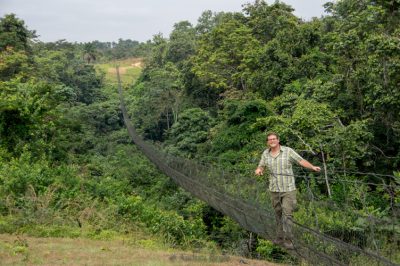
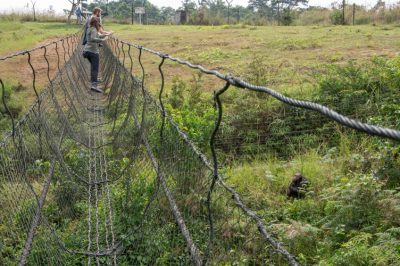
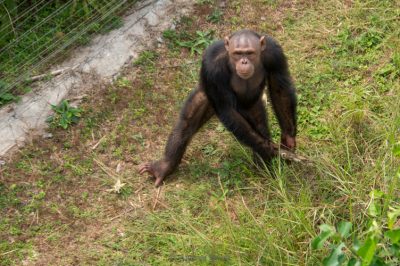

We then went back to the hotel for lunch and had a chance to walk around and explore the town a bit. A few hours later we headed out to see the mandrills. The park has a large group of mandrills (about 40) that came from the university in Franceville. Several have radio collars and researchers now come out sometimes to study their natural behavior. Because they came from the university they are fairly at ease with people, so for this excursion we would roughly locate where the mandrills were using the radio collars and then get close to them on foot. We were given a safety talk before entering the forest and were told to walk in a single file line, close together, behind the guide and not get closer than 8 meters to the mandrills.
The mandrills did not get this message. After a few minutes of walking into the dense forest we started to see some monkeys darting about on the ground maybe 10-15 meter in front of us. Then we start seeing more, there was a whole group just in front of us! Then the large and very brightly colored male appears. He starts walking towards us. I was super excited, thinking
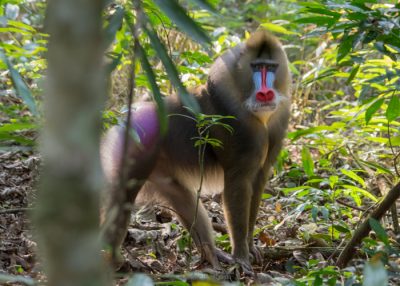
“OMG they are so close, this is awesome!” Apparently not all my friends shared my same insane feeling of enjoyment being super close to dangerous animals because soon that very large, 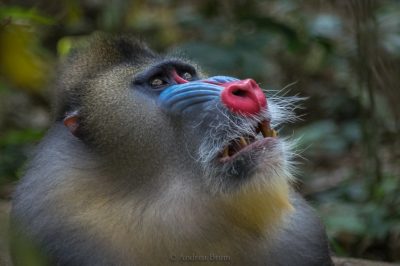 armed with 3+ inch canines dominant male decided to come aggressively walk towards us and the 3 friends that were at the front of the single file line jumped and went
armed with 3+ inch canines dominant male decided to come aggressively walk towards us and the 3 friends that were at the front of the single file line jumped and went 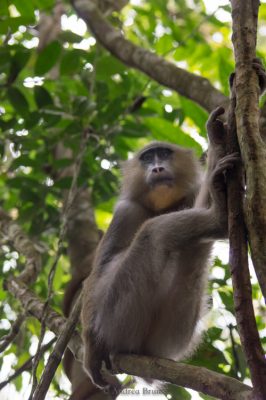 running backwards. Perfect for me, now I was just behind the guide 😉 I glanced at the guide and he indicated to keep walking forward, so I did as the male huffed and puffed and jogged back and forth between us and his ladies. We walked into a small clearing and were surrounded on all sides by mandrills of all sizes and ages. I was loving it. We soon realized why the mandrills were so drawn to us…the backpack the guide was carrying was
running backwards. Perfect for me, now I was just behind the guide 😉 I glanced at the guide and he indicated to keep walking forward, so I did as the male huffed and puffed and jogged back and forth between us and his ladies. We walked into a small clearing and were surrounded on all sides by mandrills of all sizes and ages. I was loving it. We soon realized why the mandrills were so drawn to us…the backpack the guide was carrying was 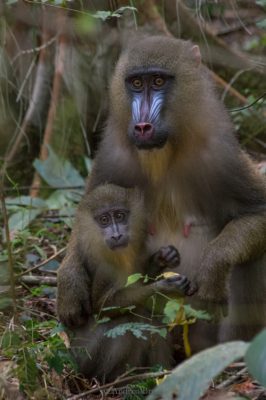 full of bananas which he began throwing out the mandrills. The excitedly ran around us, some heading up the trees and into the branches above our heads. The guide made sure to keep the big male happy and distracted by throwing bananas in his direction. I was in heaven.
full of bananas which he began throwing out the mandrills. The excitedly ran around us, some heading up the trees and into the branches above our heads. The guide made sure to keep the big male happy and distracted by throwing bananas in his direction. I was in heaven.
The next morning we headed back into the park for one last viewing….to see the gorillas.
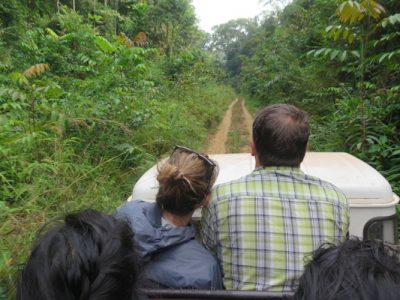
He had another bumpy, dusty drive in, but after about 30 minutes we arrived at a spot along the lagoon where we would take a boat to go view the gorillas. Our guide grabbed his electric motor, attached it to the boat and we all piled inside. The lagoon we glided across appeared to be man made as there were large numbers of cut tree trunks that we had to the dodge. About 3/4 of the way (10 minutes) to the gorillas we heard a loud “thunk” and I looked back to see the guide scrambling to try and grab the motor that had just hit a tree stump got dislodged and was sinking down into the water. He had no luck. We looked at the bubbles coming up from under the water where the motor was still spinning. Not good! Our guide starts panicking and jumps into the completely murky water (containing who knows what in it) and with one hand on the boat (it didn’t appear he could swim well) he tries to start searching for the motor. He’s having no luck, and it probably doesn’t help that the ground is well below his dangling feet. He climbs back into the boat. We continue to stare at the bubbles. A minute later the bubbles stop. The guide grabs a paddle and paddles us to the the steep bank and without saying a word to us climbs out of the boat and wanders into the forest.
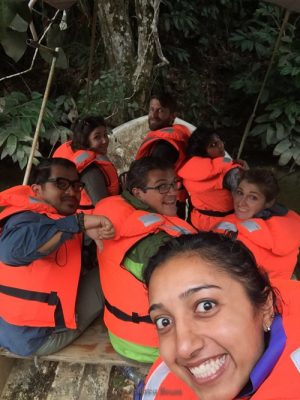
Ummmmm….ok….we are now sitting in a boat in the middle of a wild animal park without our guide and have no idea when he’s coming back. This led to a discussion in the boat about what happening and how we could find the motor, how dead the motor probably was by now, and whether or not the guide was going to get fired. Should we jump out of the boat and go looking for him? Or look for the motor? Should we all put together money to pay for the lost motor? After about 10 minutes our guide comes back down the hill carrying a long stick. We paddle back out to where the motor dropped into the water and he tries to feel for it with the stick. After several minutes of this he jumps back into the water and tries diving to locate the motor. A few seconds later he comes up, coughing and sputtering, no motor in hand. This went on for several minutes before he climbs back in the boat looking defeated. We all stare at the water, it’s as if we’re mourning the drowned motor. Ok, time to give up and go see the gorillas. Without the motor we now are recruited to paddling through the swampy water. We switch off paddling…it gives us a break from thinking about what’s going to happen to our guide when we return to camp.
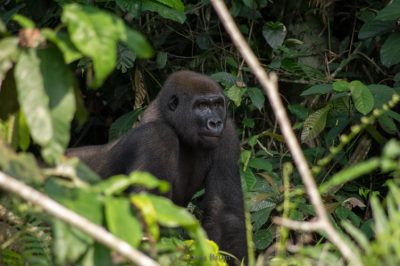 We arrive at the gorillas and see a young silverback sitting near the water. Upon seeing us get closer, he retreats closer to the tree line. Then a female and juvenile appear. Some caretakers were standing near a fence and threw food to the gorillas to entice them closer to the water.
We arrive at the gorillas and see a young silverback sitting near the water. Upon seeing us get closer, he retreats closer to the tree line. Then a female and juvenile appear. Some caretakers were standing near a fence and threw food to the gorillas to entice them closer to the water.  Opportunistic monkeys joined in, stealing any food the gorillas left behind.
Opportunistic monkeys joined in, stealing any food the gorillas left behind.
Gorillas are magnificent and shy creatures, it’s always wonderful to be able to observe them; however, this moment felt more somber than normal with the uncertainty of the fate of our guide weighing on our minds.

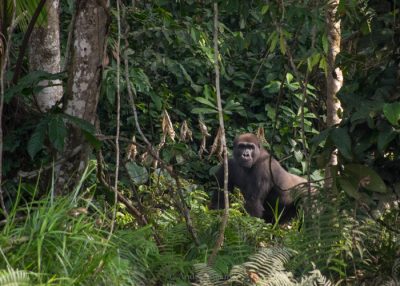

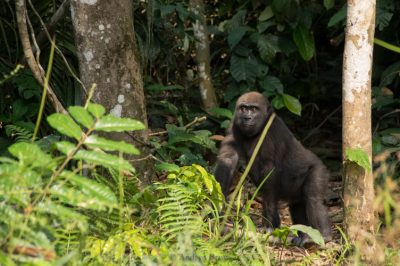
After about 30 minutes we needed to head back to the car. This trip should have taken 10-15 minutes with the aid of the motor, but our manpowered boat moved a bit more slowly. After about 45 minutes we reached the car and all piled in the the back for the dusty ride back to the hotel. As we neared the hotel our guide saw one of his friends walking near the road. He pulled over and told his friend that he lost the motor. His friend started laughing and then replied back, “Again?!”
Next up…Road Trip Part 5: heading back to Gamba and my final thoughts on traveling around Gabon
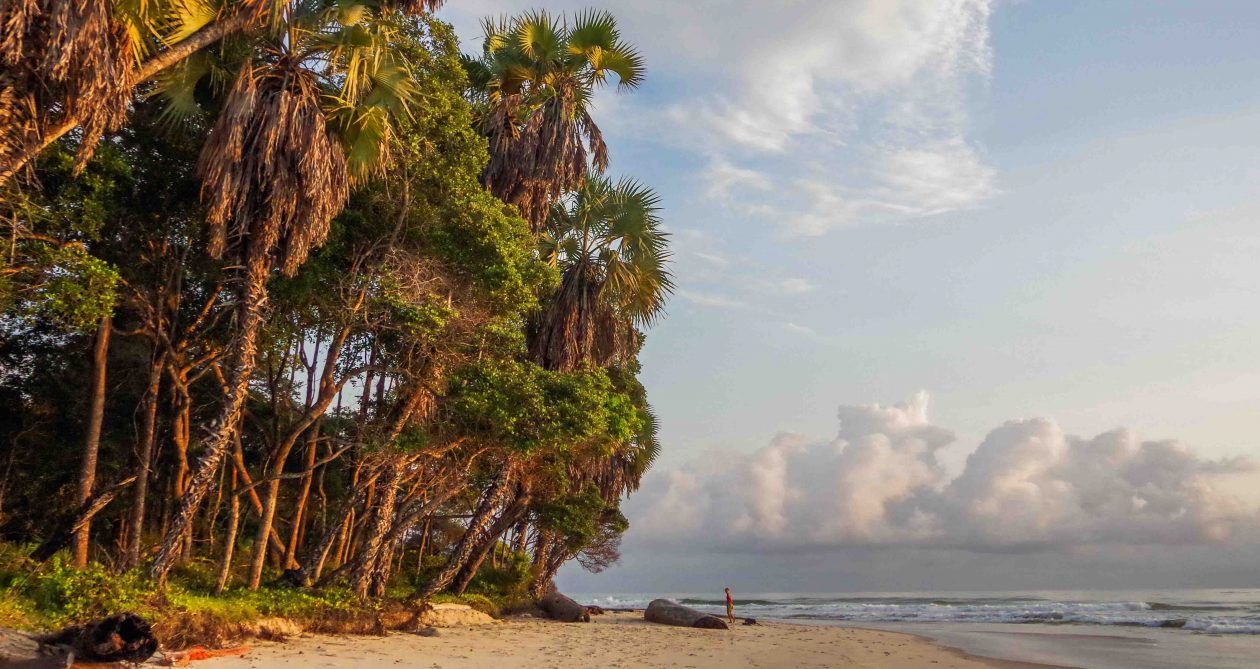

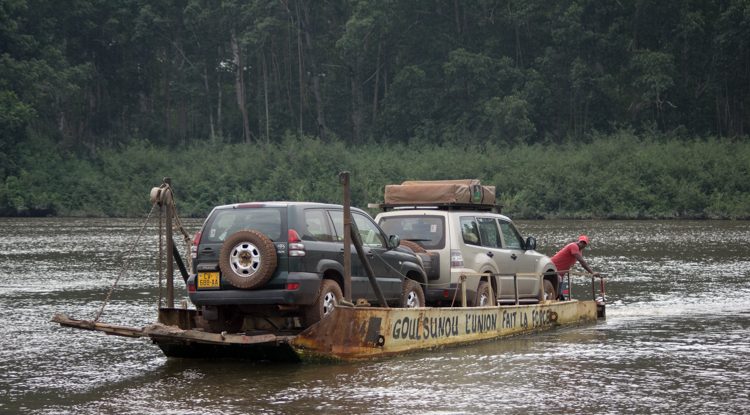
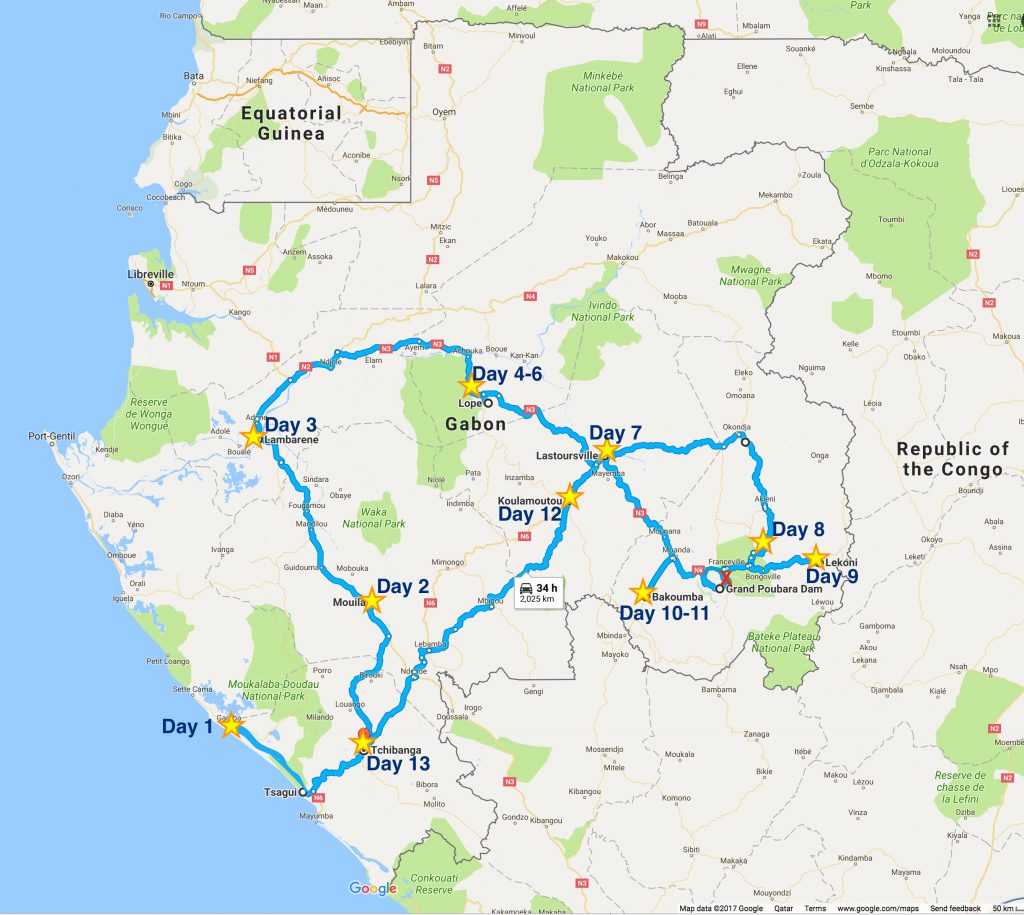
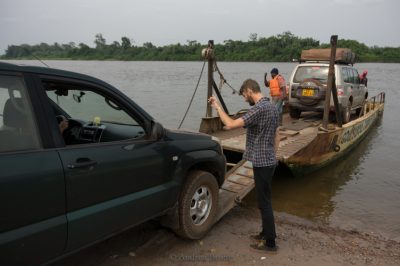


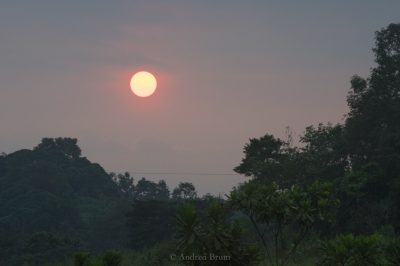
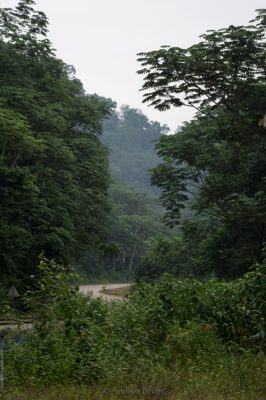
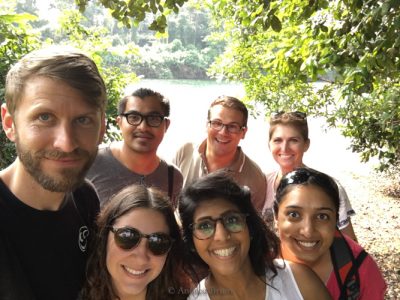
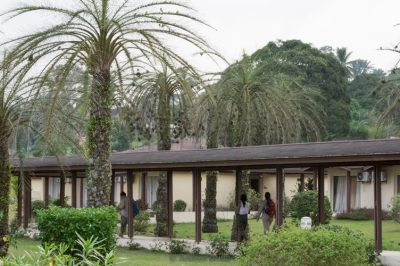
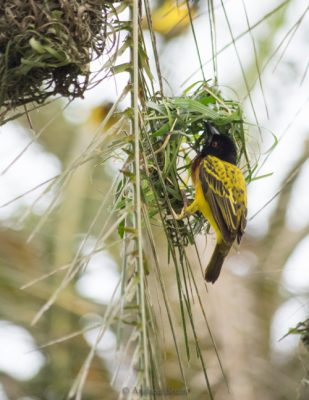
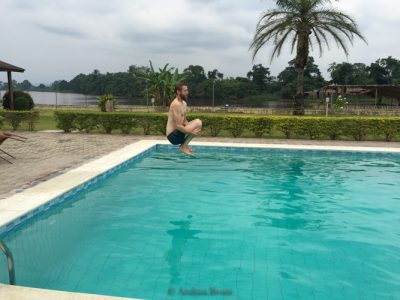

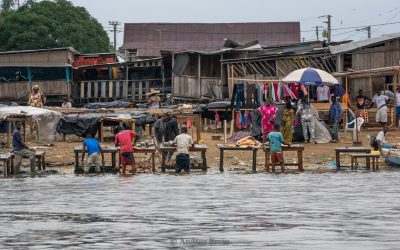
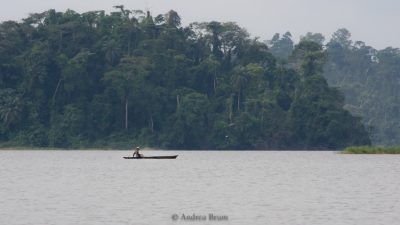
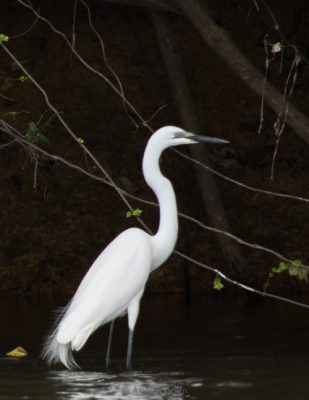


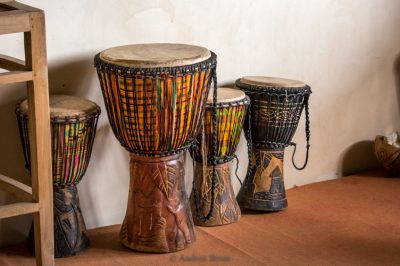
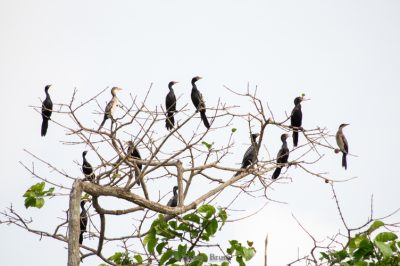
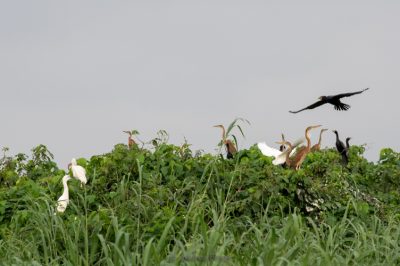
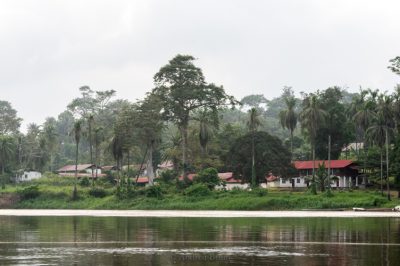
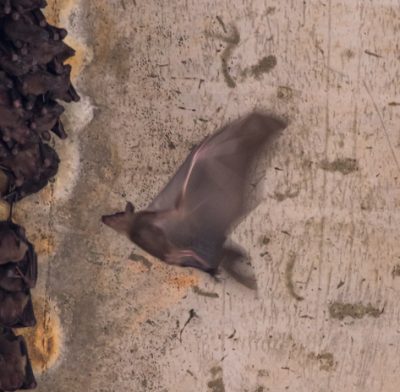

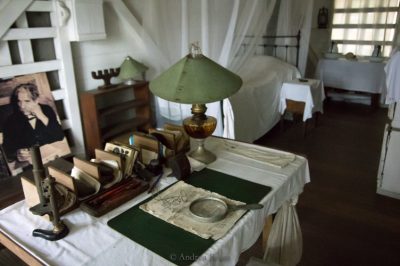
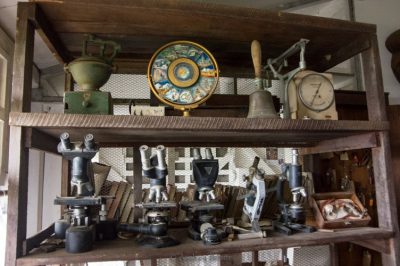
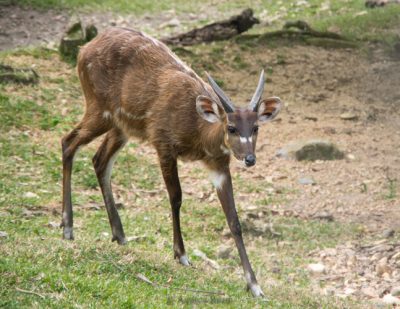
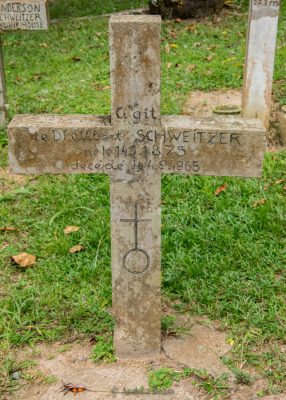
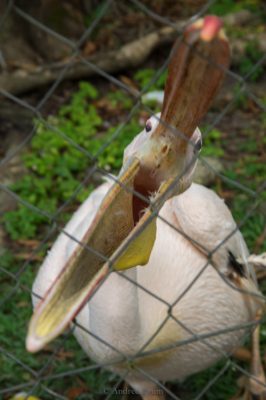
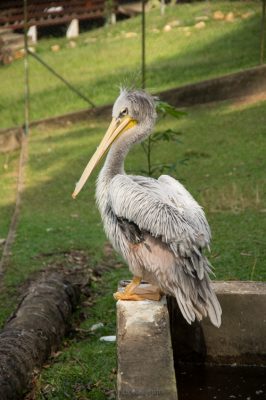
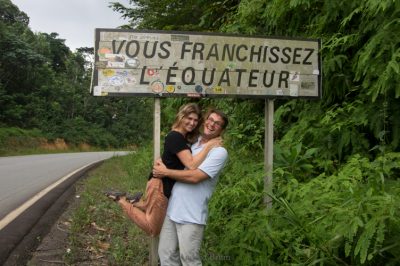
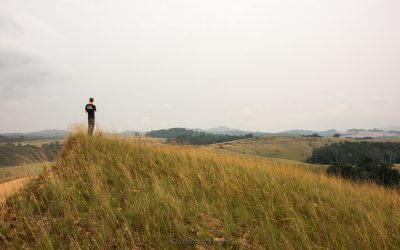
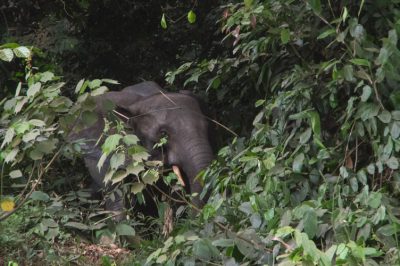
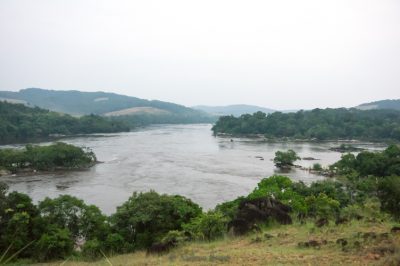

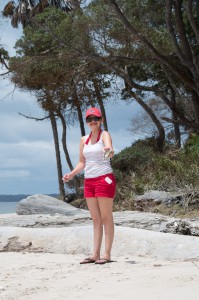
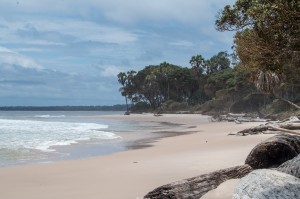

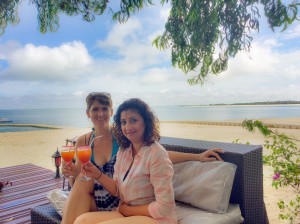
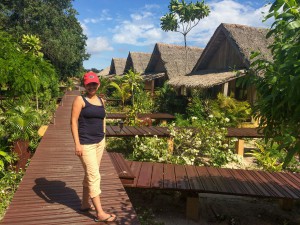 Truly a little slice of paradise just minutes away from the chaos of Libreville. We arrived by boat and once on land were immediately offered a welcome drink that we sipped while we sat under the trees gazing out over the turquoise water and pristine white sand beaches. We spent the morning walking down the beach and back before laying claim to a few beach loungers and dividing our time between napping and swimming in the crystal clear sea. Lunch was an amazing affair, 3 delicious courses that left us stuffed to the brim. Then we went back to lounging about, with cocktails this time, and swimming. It was a perfect final day of Ariana’s trip! Around 5pm we were shuttled back to Libreville and after collecting Ariana’s bags we headed to the airport to bid her a fond farewell.
Truly a little slice of paradise just minutes away from the chaos of Libreville. We arrived by boat and once on land were immediately offered a welcome drink that we sipped while we sat under the trees gazing out over the turquoise water and pristine white sand beaches. We spent the morning walking down the beach and back before laying claim to a few beach loungers and dividing our time between napping and swimming in the crystal clear sea. Lunch was an amazing affair, 3 delicious courses that left us stuffed to the brim. Then we went back to lounging about, with cocktails this time, and swimming. It was a perfect final day of Ariana’s trip! Around 5pm we were shuttled back to Libreville and after collecting Ariana’s bags we headed to the airport to bid her a fond farewell.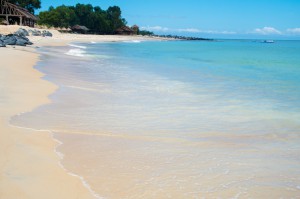
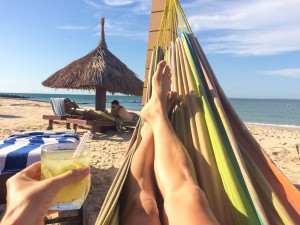
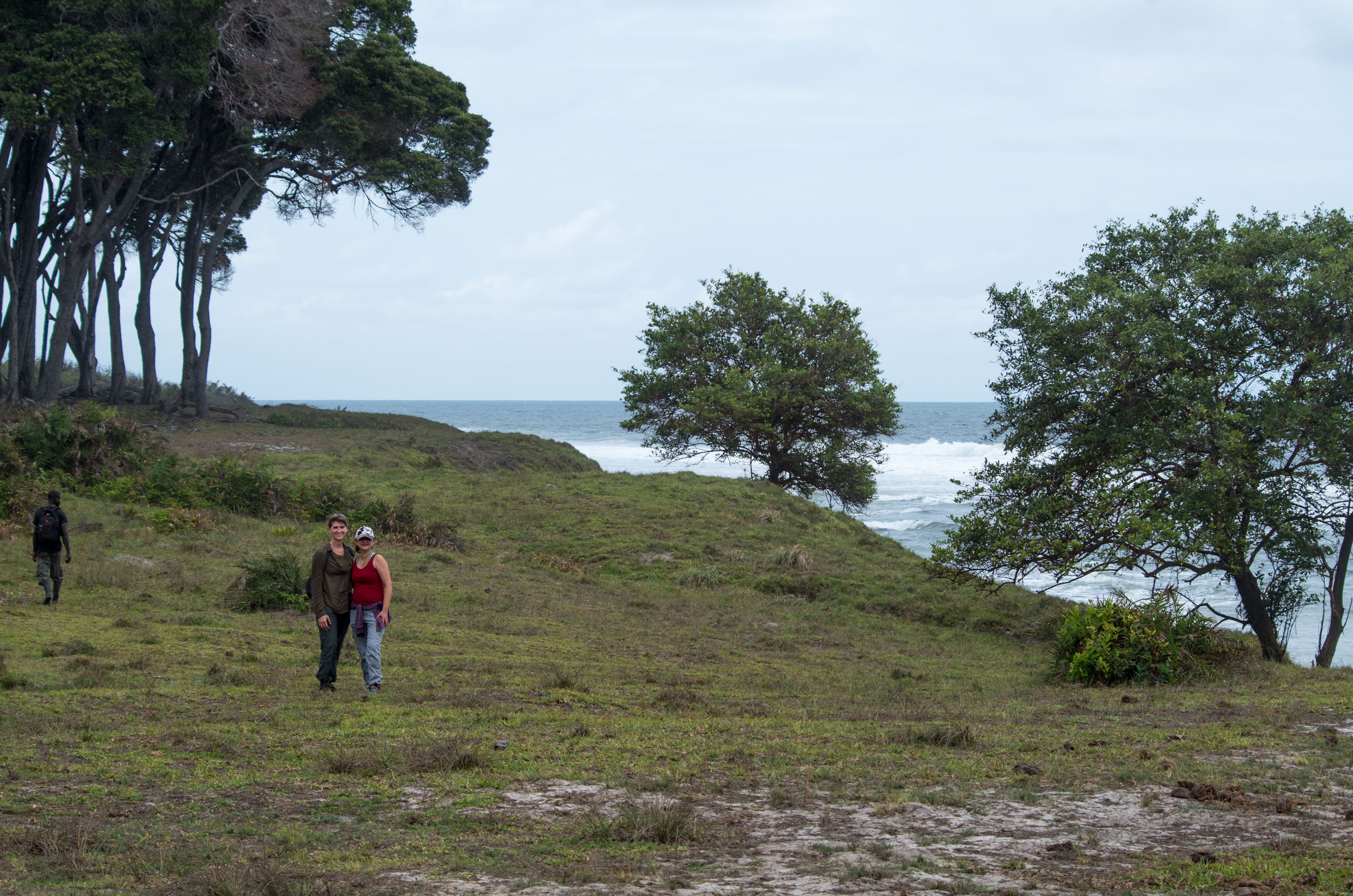

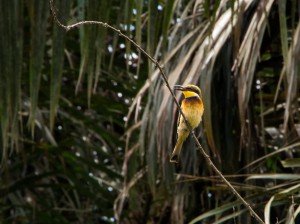
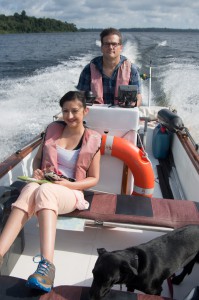
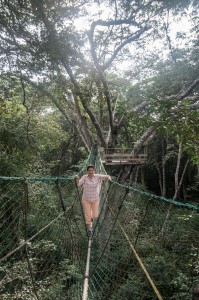 Loango National Park. Before arriving at the hut we of course had to stop at the
Loango National Park. Before arriving at the hut we of course had to stop at the 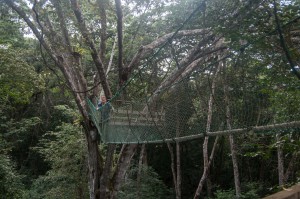 the way to the top and even crossed the rope bridge! That night we enjoyed some drinks on the beach, just steps behind the hut, while watching the sunset.
the way to the top and even crossed the rope bridge! That night we enjoyed some drinks on the beach, just steps behind the hut, while watching the sunset.
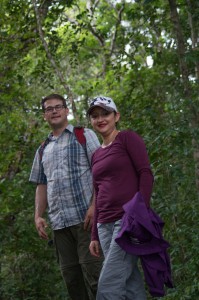
 impressive spiders. I found walking through the forest was really magical; Ariana, who lets just say isn’t the most outdoorsy person, may have found the experience slightly less magical.
impressive spiders. I found walking through the forest was really magical; Ariana, who lets just say isn’t the most outdoorsy person, may have found the experience slightly less magical. 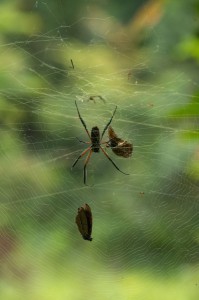 Or at least that the impression I had as she asked every 10 minutes if we were almost back to the boat yet and continuously tried to in vain to swat invisible insects away from her face. This probably wasn’t helped when at one point, after our guide pointed out a large spider web and then demonstrated where to walk around it, Ariana then walked through the side of it 🙂
Or at least that the impression I had as she asked every 10 minutes if we were almost back to the boat yet and continuously tried to in vain to swat invisible insects away from her face. This probably wasn’t helped when at one point, after our guide pointed out a large spider web and then demonstrated where to walk around it, Ariana then walked through the side of it 🙂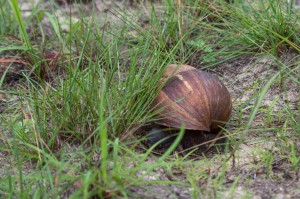

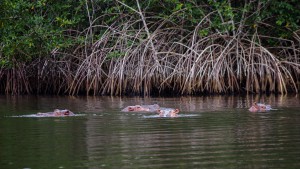
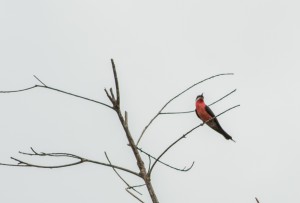 It was a successful search and we spent about a half an hour watching a fairly relaxed group of hippos bob up and down in the water checking us out. We also spotted some rosy bee eaters, pelicans, and a red capped mangabey monkey hanging out in the mangroves.
It was a successful search and we spent about a half an hour watching a fairly relaxed group of hippos bob up and down in the water checking us out. We also spotted some rosy bee eaters, pelicans, and a red capped mangabey monkey hanging out in the mangroves.
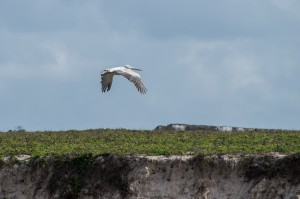

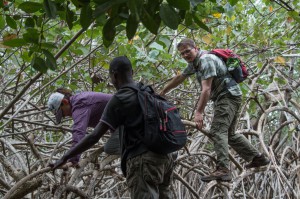
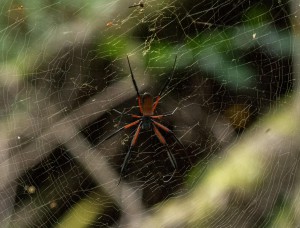
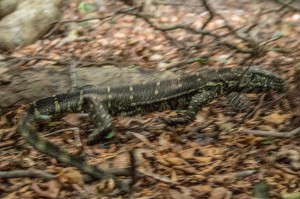


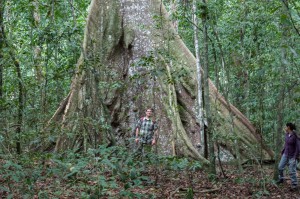
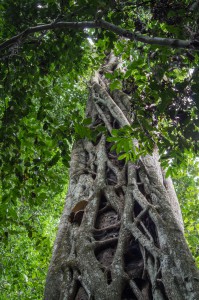

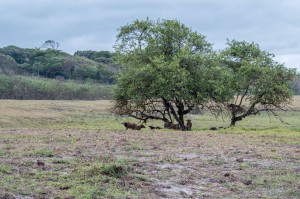

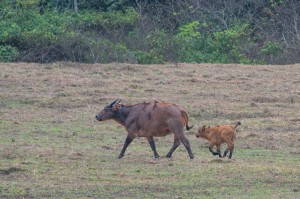



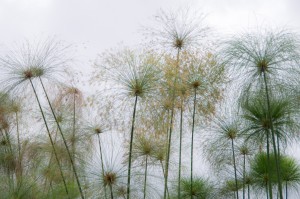

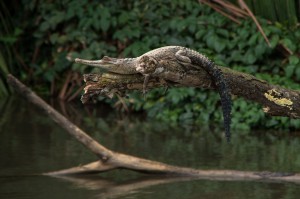
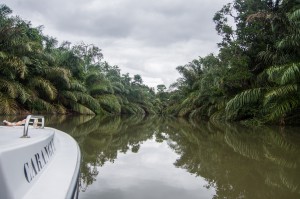
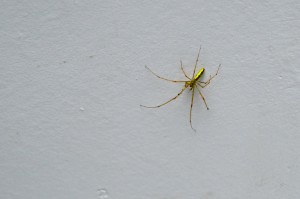
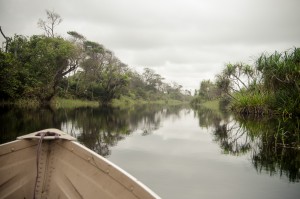
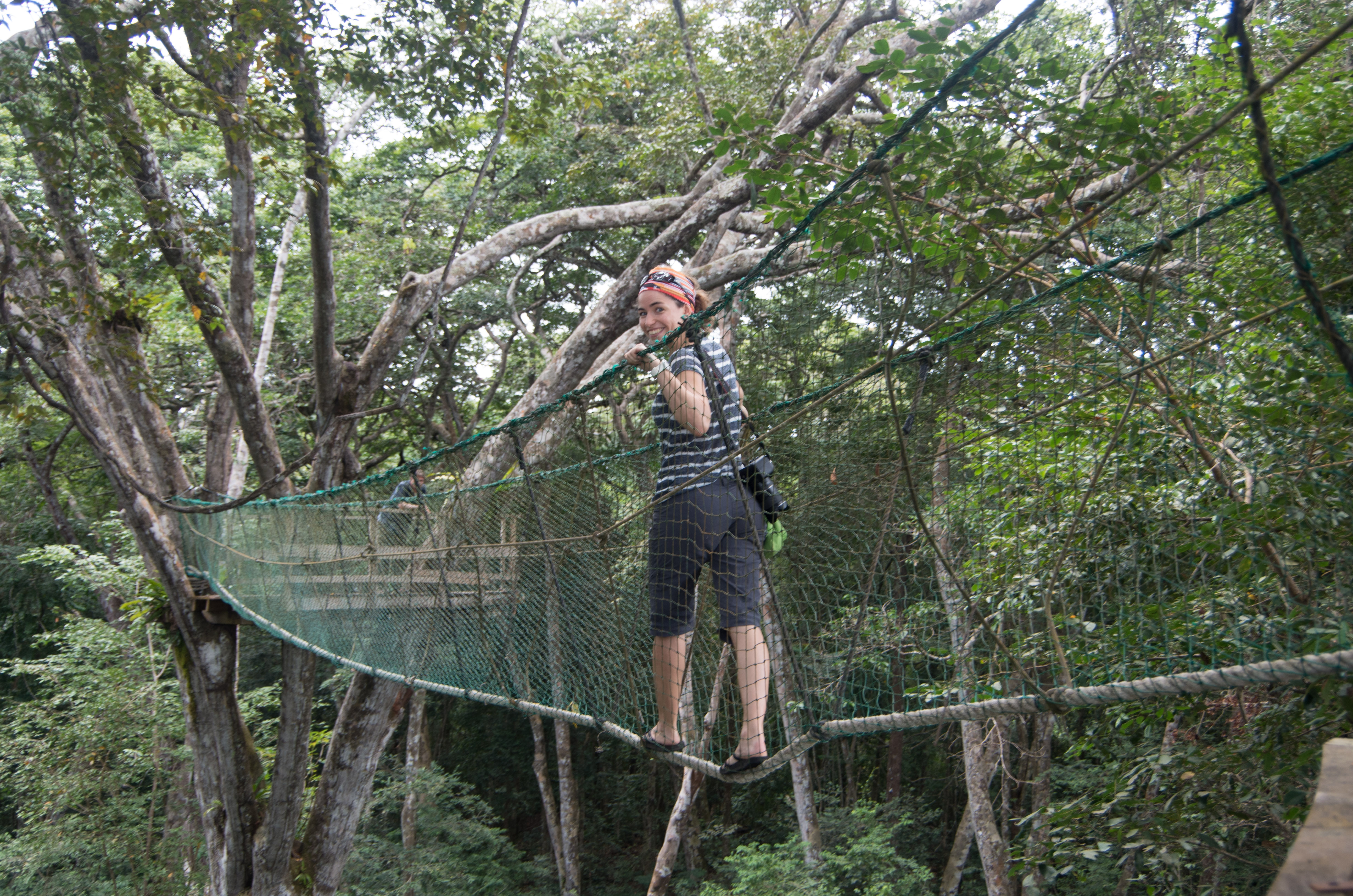
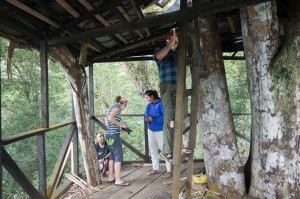

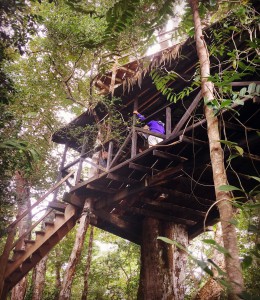 The hut was build some 8 years ago by the BBC and featured in their tv show. The goal was to provide a place for researchers to study the red capped mangabeys, which apparently are a rare species if you consider the world. To us they are quite normal as they roam the trees around our house quite frequently….anyways Ariana was coming and the hut needed some repairs, after years in the jungle
The hut was build some 8 years ago by the BBC and featured in their tv show. The goal was to provide a place for researchers to study the red capped mangabeys, which apparently are a rare species if you consider the world. To us they are quite normal as they roam the trees around our house quite frequently….anyways Ariana was coming and the hut needed some repairs, after years in the jungle 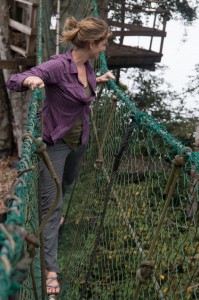
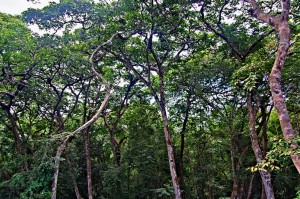

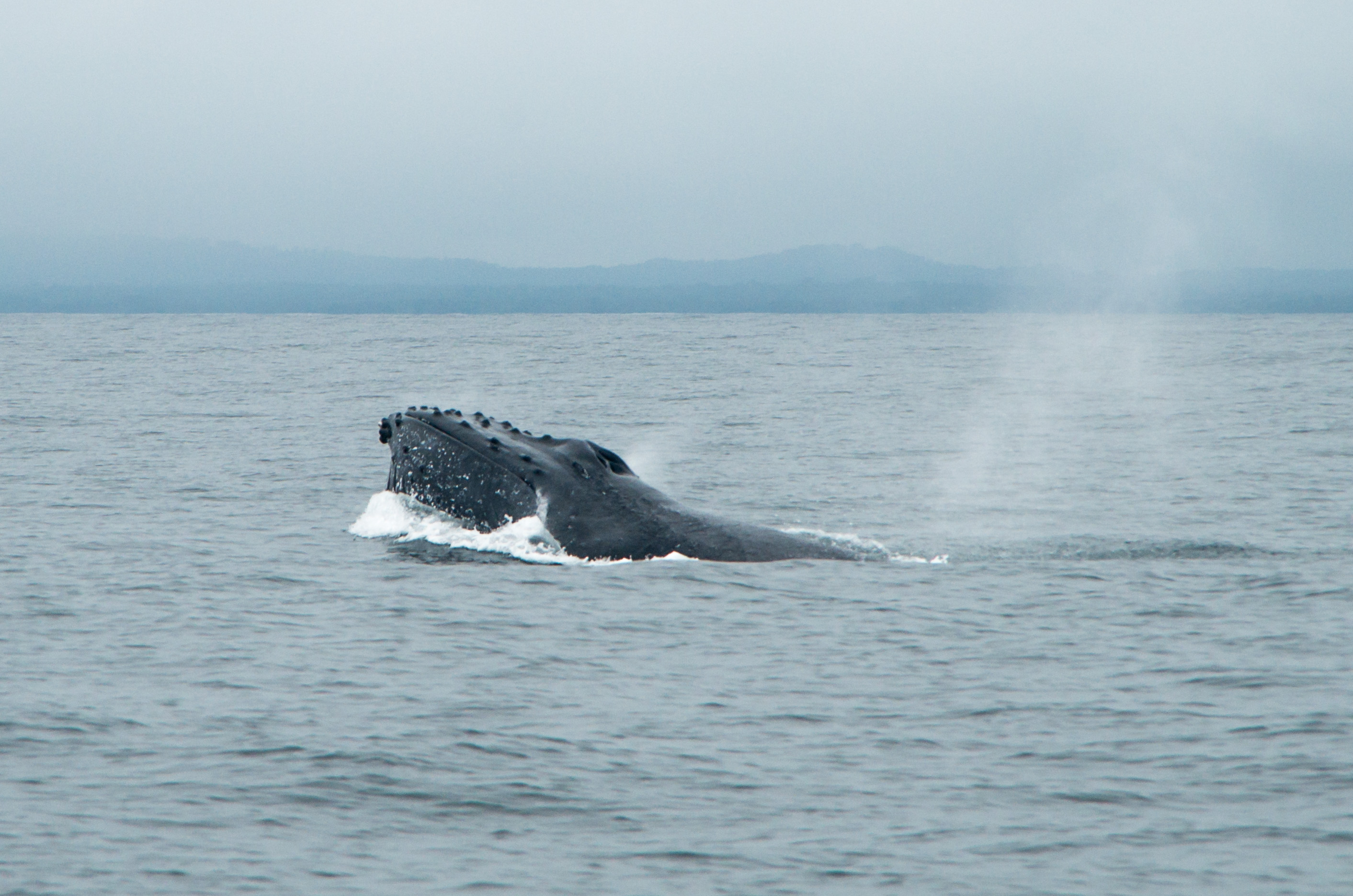
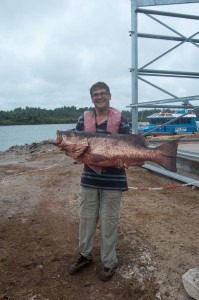
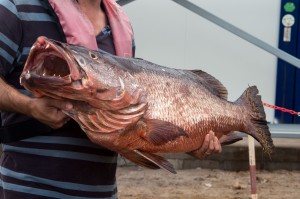
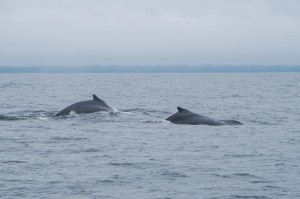 He navigated out into the calmer waters with ease and we began our search for whales.It didn’t take too long before a splash in the water was spotted and soon we were within meters of a small pod of humpback whales! It was really amazing being so close to such huge and majestic animals.
He navigated out into the calmer waters with ease and we began our search for whales.It didn’t take too long before a splash in the water was spotted and soon we were within meters of a small pod of humpback whales! It was really amazing being so close to such huge and majestic animals.  One was particularly curious about us and popped up what seemed like right next to the boat and twisted its massive body around on the surface to get a good look at us.
One was particularly curious about us and popped up what seemed like right next to the boat and twisted its massive body around on the surface to get a good look at us. 